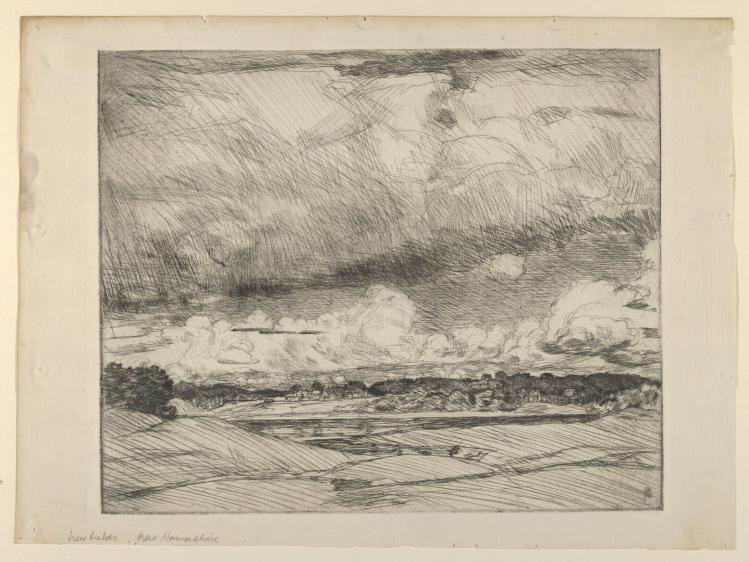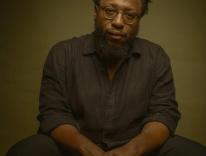
The intersection of Route 27 and Main Street in East Hampton, New York, has enchanted me since I was a child. There is the postcard loveliness of it: the town pond reflecting reeds and sky, the swans, the worn cemetery stones set in lush grass. Every summer of my childhood I felt that catch-your-breath thrill at the unchanging sight of it as my father drove us through the town for our two-week vacation in what we always called “the country,” never “the Hamptons.” The sensation caught me again that day in late June when my husband and I returned to East Hampton after a ten-year hiatus.
As we made the left turn into the village, I felt myself delighted once again by the placid beauty of the scene, the deep colors and the watery light. Passing the Home Sweet Home museum, a preserved cedar cottage from the 1700s, I recalled summer “educational” visits there and a fascination I’d had as a child with an antique checker set that was always on display—the checkers brown or yellow corn kernels, the board set up to suggest that a game was already underway, that the children who played it had only briefly, recently, stepped away.
My obsession with this display involved my certainty that someday, from the corner of my eye, I might actually catch a glimpse of the two children who had played there centuries ago—an obsession spiced deliciously by my absolute terror that I might, someday, actually catch, from the corner of my eye, a glimpse of the children who had played there, children now two hundred years dead.
As we drove through the village again that June, I recalled, as well, church fairs on the green and a delightful “needle in the haystack” game—delightful to me, who had no chance at games of skill—that involved simply searching through a pile of hay until you found a prize.
I remembered, too, an anniversary dinner my husband and I had shared, our fourth wedding anniversary thirty years earlier, at The Hedges Inn, just beyond the pond, where the bartender plied us with free drinks and ghost stories that involved innocent objects—an umbrella stand, a lady’s shawl—moving eerily about the upstairs rooms.
That summer thirty years ago was also the summer of the year my father died, the first and last time my mother went out to the country alone.
Driving through the village once again, I was reminded that for me it had always been my father’s place, East Hampton. He’d come out here from Manhattan as a child, brought by an Irish aunt who had married a local. He’d bought his first house on Dayton Lane. His older sister lived on Georgica Road. When we were children, it seemed to us that he knew everyone in town, from the policeman at Newtown Lane to the clerks at the A&P to the volunteers in the Ladies’ Village Improvement Society shop—another, figurative, haystack for my brothers and me, where we were let loose every summer with a quarter or two to discover among the jumble all kinds of unexpected wonders, old picture books, ancient military medals, a cigar box filled with cat’s-eye marbles, a brown paper bag brimming with odd buttons. My husband and I were on our way to Amagansett, to a beach house we had rented years before. I was turning sixty and we were meeting old friends to celebrate, to commiserate. It struck me as we passed through the village that the years I’d had my father in my life—thirty—were now to be outnumbered by the years I was without him.
The single key was in its usual place at the Amagansett cottage, and once we let ourselves in, I found the two full sets of keys the owner had left for us. I placed one set on the mantel and was suddenly struck with the sixty-something premonition that we were going to lock ourselves out by week’s end.
I decided to put the other set in the car. I went out to the short driveway. The trunk was open. My husband was carrying our bags inside. I brushed aside a beach towel to place the keys in a secure corner of the trunk and suddenly saw my father’s signature, as familiar as a much-loved face.
I reached in. It was a Florida automobile-registration card, filled out with his last address, dated 1981, and signed with his own distinctive flourish. That car had been sold decades ago. This one was fairly new. For three years I’d opened and closed this trunk daily, filled it with grocery bags, suitcases, my mother’s wheelchair. I’d never seen this card before. Nor had my husband. We had no idea why it was suddenly there.
Just before we left for that trip to Long Island, I was putting away the detritus of a completed novel—notebooks, drafts, galleys—when I found a poem I had copied out somewhere along the way, a poem written by the fictional Konstantin Perov in Nabokov’s short story “A Forgotten Poet.” I’d copied it down to remind myself of something—something about the way objects appear in fiction.
If metal is immortal, then somewhere
there lies the burnished button I lost
upon my seventh birthday in a garden.
Find me that button and my soul will know
that every soul is saved and stored and treasured
In Swann’s Way, Proust tells the reader this:
I find the Celtic belief very reasonable, that the souls of those we have lost are held captive in some inferior creature, in an animal, in a plant, in some inanimate object, effectively lost to us until the day, which for many never comes, when we happen to pass close to the tree, come into possession of the object, that is their prison. Then they quiver, they call out to us, and as soon as we have recognized them, the spell is broken. Delivered by us, they have overcome death and they return to live with us.
In The Habit of Being, her collected letters, Flannery O’Connor says,
St. Augustine wrote that the things of the world pour forth from God in a double way: intellectually into the minds of the angels and physically into the world of things…. The artist penetrates the concrete world in order to find at its depths the image of its source, the image of ultimate reality.
Whether they contain the souls of the dead or the image of ultimate reality, no inanimate object (or animal or plant, for that matter) in a story or a novel is arbitrary. How can it be? It is not set there by nature or happenstance, by market forces or human need. Objects in a novel or story are created, made up, selected by a creative intelligence (the author), chosen and then hand-delivered via the prose, and as such they all, every one of them, quiver with meaning, or the potential for meaning. Every one of them contains the potential to stir a memory, evoke a metaphor, conjure a ghost, reflect an ultimate reality.
If Proust and O’Connor, and my own childish fear of haunted checkerboards, can’t convince you of this, of the potential for meaning inherent in every object you include in your novel or story, think about it this way:
You receive a birthday gift from your partner, spouse, lover, oldest friend, whatever. It is, let’s say, a ceramic chipmunk. Your first thought when you unwrap the gift is: Why? Was there some mad, perhaps drunken, moment from your past together that featured a chipmunk? Is there some classical or mythological or contemporary literary reference that you’re missing? Doesn’t the gift’s very specificity—why not a ceramic rabbit or a Dutch boy or a pineapple—imply some message, some joke, some hidden meaning?
You look up from the gift to find that your friend is smiling warmly, knowingly. “Cute,” you might say, “but what does it mean?”
If the explanation is good, as in, “If that chipmunk hadn’t gotten into your tent at summer camp, we never would have met,” if it evokes a forgotten past or connects cleverly to some aspect of your shared experience, your pleasure in the gift, and your admiration for your thoughtful friend, will increase dramatically. If, however, your friend, partner, lover, spouse shrugs and says, “No meaning. I just bought it for you,” you surely will be disappointed, nonplussed. You may even suspect that it has been regifted.
No object in a story or novel is arbitrary, because every object, every detail, in fact, is selected by the writer, who has chosen to notice it, to make note of it. Every detail pours forth from the writer in a double way: as something inevitable, because the world being described contains it, but also as something meaningful, because the writer has made note of it, selected it from all the physical objects existing in the world that he or she has chosen not to describe. And because it is chosen, selected, made note of, elevated by the author’s attention above all objects that are not mentioned, purpose, meaning, an ultimate, creative intelligence is implied.
And so all objects in fiction, even the most mundane, shimmer with mystery and meaning, with the souls of the dead as well as the image of some ultimate reality. Burnished buttons or shell-shaped cookies, mummified remains in a museum’s glass case or a mundane registration card from the Florida DMV, these objects are no longer simply the things themselves, but something transformed by the writer’s attention, saved and stored and treasured by the writer’s art.
This piece is excerpted from What About the Baby?: Some Thoughts on the Art of Fiction, which will be published by Farrar, Straus and Giroux on August 17, 2021. Copyright © 2021 by Alice McDermott. All rights reserved.
Please email comments to [email protected] and join the conversation on our Facebook page.
Previous Story
‘Show Me Your Dantes’
Next Story
Stirring the Embers of Faith


